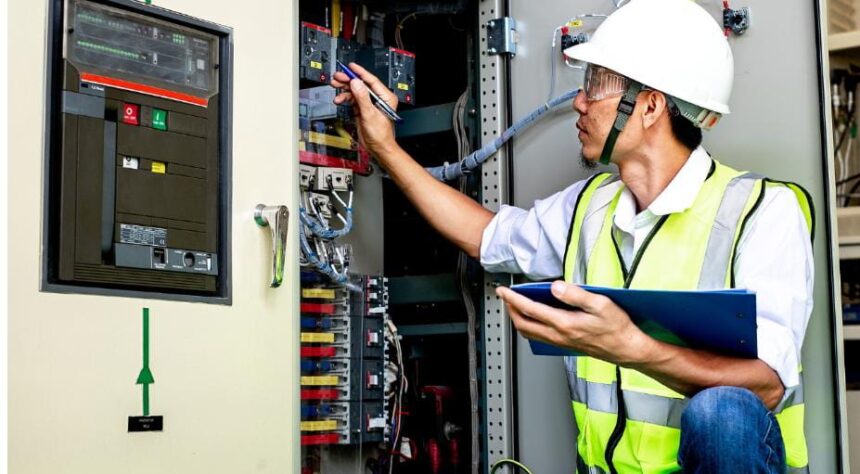If you own or rent a home in the UK, ensuring electrical safety is paramount. An Electrical Installation Condition Report (EICR) is a critical inspection that evaluates the condition of electrical installations within a property. Whether you’re preparing for your first EICR inspection or curious about the process, understanding what to expect can help you navigate the procedure smoothly. In this guide, we’ll walk you through the steps involved in a domestic EICR inspection. A Domestic EICR is essential for identifying potential electrical hazards and ensuring compliance with safety standards, providing peace of mind for homeowners and tenants alike.
Understanding the Purpose of an EICR
1. Assessment of Electrical Installations
An EICR aims to assess the condition of electrical installations in a property. It identifies any defects, potential risks, or non-compliance issues that could compromise safety.
2. Compliance with Regulations
EICRs are conducted to ensure compliance with the Wiring Regulations (BS 7671) and other relevant safety standards. Compliance helps prevent electrical hazards and ensures the safety of occupants.
Preparation Before the Inspection
1. Appointment Scheduling
Contact a qualified electrician or electrical contractor to schedule an EICR inspection. Ensure they are registered with a competent person scheme or accredited by a recognized body.
2. Access to Electrical Installations
Clear access to all electrical installations, including sockets, switches, fuse boxes (consumer units), appliances, and loft spaces, should be provided for the inspector.
Conducting the EICR Inspection
1. Visual Inspection
The inspector will conduct a visual assessment of visible electrical installations, looking for signs of damage, wear, or poor workmanship that may indicate potential issues.
2. Testing and Verification
Electrical tests will be performed to assess the safety and performance of installations. This includes tests for continuity, insulation resistance, polarity, and earth fault loop impedance.
Identification of Defects and Issues
1. Reporting Findings
The inspector will document any defects, non-compliance issues, or observations identified during the inspection. These may include circuit overloading, inadequate earthing, or outdated wiring.
2. Classification of Observations
Findings will be classified into different codes according to severity:
- C1: Danger present, immediate remedial action required.
- C2: Potentially dangerous, remedial action required urgently.
- C3: Improvement recommended.
- FI: Further investigation required without delay.
Completion of the EICR Report
1. Detailed Report
A comprehensive EICR report will be provided, detailing the findings, observations, and recommendations. It serves as a record of the inspection’s outcomes and forms the basis for further actions.
2. Review and Discussion
Review the EICR report with the inspector to understand the findings and recommended actions. Discuss any questions or concerns regarding electrical safety and compliance.
Post-Inspection Actions
1. Remedial Works
If defects or issues are identified (C1 to C3 codes), arrange for remedial works by a qualified electrician to address the findings promptly.
2. Re-inspection (if necessary)
In some cases, a follow-up inspection may be required to verify that remedial works have been completed satisfactorily and to issue an updated EICR report.
Compliance and Safety Assurance
1. Compliance Certificate
Upon satisfactory completion of the inspection and any necessary remedial works, a compliance certificate (EICR certificate) will be issued. This certifies that the electrical installations meet safety standards.
2. Peace of Mind
A valid EICR certificate provides assurance of electrical safety within your home, ensuring peace of mind for you and your household members.
Conclusion
A domestic EICR inspection is a proactive measure to assess and ensure the safety and compliance of electrical installations in your home. By understanding the steps involved—from scheduling the inspection to receiving the final compliance certificate—you can actively contribute to maintaining a safe living environment. Regular EICR inspections, typically recommended every 5-10 years or during change of tenancy, help mitigate electrical risks and ensure that your home meets regulatory standards. Prioritize electrical safety by scheduling an EICR inspection today—because a safe home is a secure home for you and your loved ones. For streamlined safety certifications tailored to landlord requirements, partnering with Landlord Certification ensures comprehensive solutions that uphold regulatory standards and enhance tenant safety protocols in residential properties, If you want to stay updated with posts like this, please follow us on NEWSGENIUS.








